 |
||
 |
Group KLiN: Konstantin Kuzmin, Vladimir Lyubushkin, and Vadim Naumov |
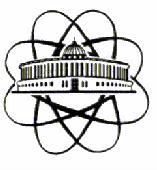 |
 |
||
About the project
| One
of the aims of our project is to build up a small but comprehensive
database of the
accelerator data on the cross sections for neutrino and
antineutrino interactions with nucleons and nuclei. The experimental
database will be supplemented with the references on the relevant
theoretical and phenomenological papers. Some of the issues
are listed in the table: |
|
|
Total cross sections for neutrino and antineutrino CC interactions with proton, neutron and isoscalar targets [including the "slopes" and different ratios (“nubar/nu”, “n/p”, “e/mu”, etc.)]. |
|
|
Total cross sections for neutrino and antineutrino NC interactions with proton, neutron and isoscalar targets [including the "slopes" and different ratios]. |
|
|
Total elastic cross sections for neutrino and antineutrino NC interactions with nucleons. |
|
|
Total quasielastic cross sections for neutrino-neutron and antineutrino-proton CC interactions with nucleons. |
|
|
Total cross sections for single-pion production in neutrino and antineutrino CC interactions with nucleons. |
|
|
Total cross sections for single-pion production in neutrino and antineutrino NC interactions with nucleons. |
|
|
Electromagnetic vector form factors of the nucleon. |
|
|
Axial-vector nucleon form factor of the nucleon [including the values of the “axial mass” extracted from the data of (anti)neutrino experiments]. |
| To the
moment, we have collected and analyzed the data marked in the table by
red ball.
We are planning to
publish these data in web in near
future. The work for other items is in progress. The necessity of a comprehensive neutrino cross-section data-resource for particle physics and astrophysics is obvious to the “neutrino community”. BUT… such a resource already there exists and moreover it is intensively used by the community; this is the well known HEPDATA, the Durham HEP Databases from the Durham Database Group (see also HEPDATA: Reaction Data Database and the relevant recent paper by M.R. Whalley, Nucl. Phys. B (Proc. Suppl.) 139 (2005) 241-246; hep-ph/0410399). This resource is incorporated into the SPIRES HEP Literature Database providing a "one click" access to the data just from the bibliographic record in SPIRES. Therefore we have to explain our incentives to perform an additional diligent and thankless job.
1. The Durham compilation of the neutrino cross sections is rather incomplete. In particular, it ignores, perhaps inadvertently, many old (but not obsolete!) publications. Let us remind that the modern accelerator experiments operate with the high-energy (anti)neutrino beams (above some tens of GeV). On the over hand, the low-energy ("few-GeV") data of the earlier experiments are extremely important for many fields of astroparticle physics as well as for the future experiments with neutrino factories and super-beams. 2. The Durham group usually neglects the not tabulated (published in figures only) data [except for the cases when the tabulated data were obtained by the Durham group directly from the authors]. However, the market of software provides many simple and powerful instruments for digitalization of information presented in any graphical format and hence there are no serious reasons for neglecting these data. We have used several tools for an accurate extracting the digital data from all the relevant publications available electronically (mainly the papers published in refereed journals but, sometimes, the reports in conference proceedings and unpublished reports). 3. Of course, we always cross-checked the extracted data with the Durham's tables if these were available. As a result we found several misprints, omissions and inaccuracies in the HEPDATA. 4. Published results of many experiments were superseded or revised in the posterior reports of the same collaborations (due to increased statistics, revised normalization, etc.). Surely this is well known to the Durham group. Nevertheless, in many cases the information of this kind is absent from their database.
A few examples of the data sets are shown in Figs.1-6. The theoretical bands were obtained by adjusting the poorly known physical parameters to the experimental data points marked with blue or pink colors (see our recent eprint hep-ph/0511308 for more details). The fit is still very preliminary since it does not include the data on the differential cross sections, single-pion neutrinoproduction (see hep-ph/0606184), neutral currents, etc. |
 |
||
|
Fig.1: Total QES cross sections measured by
the experiments at ANL, BNL, FNAL, LSND, CERN, and IHEP. Both
statistical and total errors are shown for the
earliest low-energy data of the CERN 1969 (excluded from
the fit) and for the most current high-energy data of NuTeV. The
filled rectangles are for the NuTeV data (with the total
error) averaged over the wide energy range 30 to 300 GeV.
The data for nuclear targets (indicated in the parentheses
in the legend) are converted to a free nucleon. The curves
are for the QES cross sections calculated with the value of
the axial mass obtained from the global B3 fit (see hep-ph/0511308). The narrow grey bands show the one
standard deviation
from the best-fit curves.
|
||
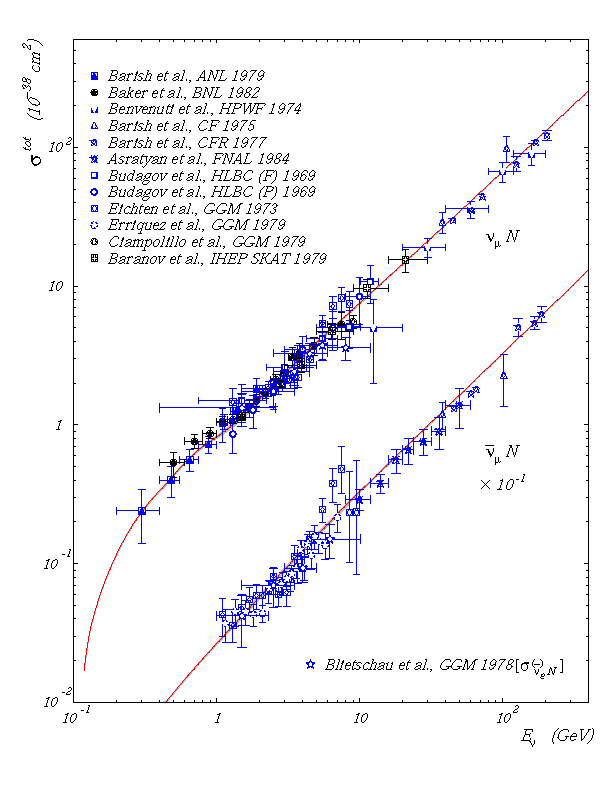 |
||
|
Fig.2: Total CC cross sections for muon
neutrino and antineutrino scattering off an isoscalar nucleon measured
by the
experiments at ANL, BNL, FNAL, CERN, and IHEP. Also shown are the
electron neutrino and antineutrino cross sections measured
by the GGM 1978 experiment. The antineutrino data are scaled with a
factor of 0.1 for better visualization. The curves and bands
show the cross sections calculated with the best-fitted values
of the four parameters shown in the legend in Fig.3.
|
||
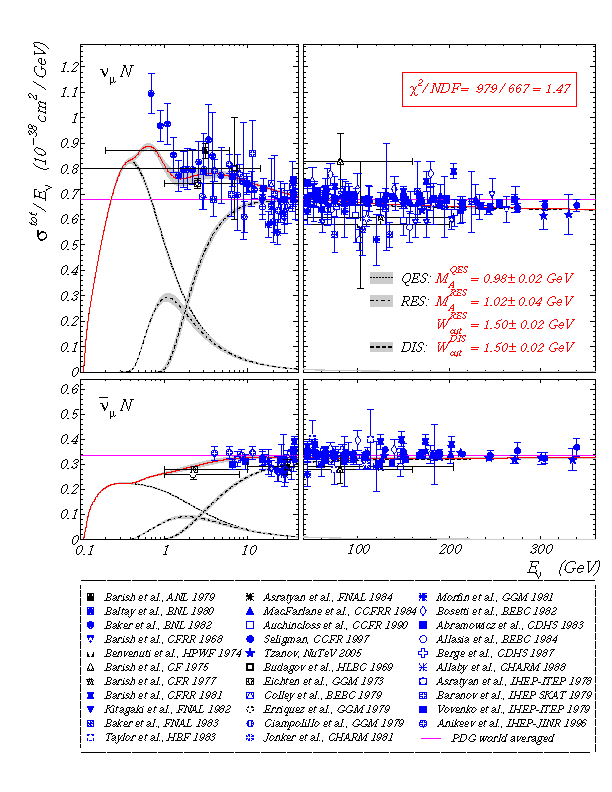 |
||
|
Fig.3: Slopes of the total CC cross sections
for muon
neutrino and antineutrino scattering off an isoscalar nucleon
measured by the experiments ANL, BNL, FNAL, CERN, and IHEP. The data
points with horizontal error bars are for the slopes averaged
over the wide energy ranges; these do not participate in the
fit and the corresponding energy binned data (included into the
fit) are shown
in Fig.2. The curves and bands show the QES, RES, and DIS contributions
and their
sums calculated with the best-fitted values of the
parameters depicted in the legend in top panel. The averaged values
over
all energies obtained
by the Particle Data
Group are also shown for a comparison (straight lines).
|
||
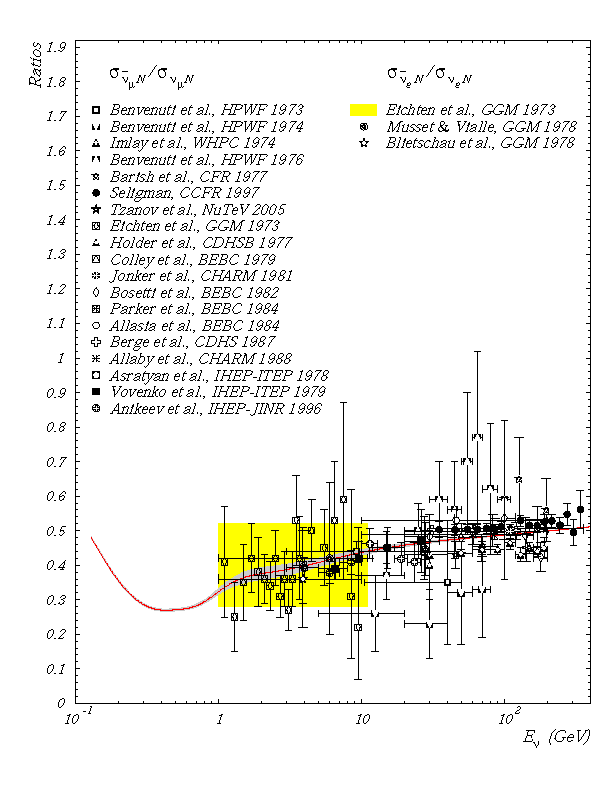 |
||
|
Fig.4: The ratio of the muon neutrino and
antineutrino scattering cross sections for an isoscalar nucleon
measured by the experiments at FNAL, CERN, and IHEP. The ratio of the
electron neutrino and antineutrino cross sections reported
in the three publications of the Gargamelle
collaboration is also shown. The curve and band are calculated with the
same values of the fitted parameters as
in Fig.3.
|
||
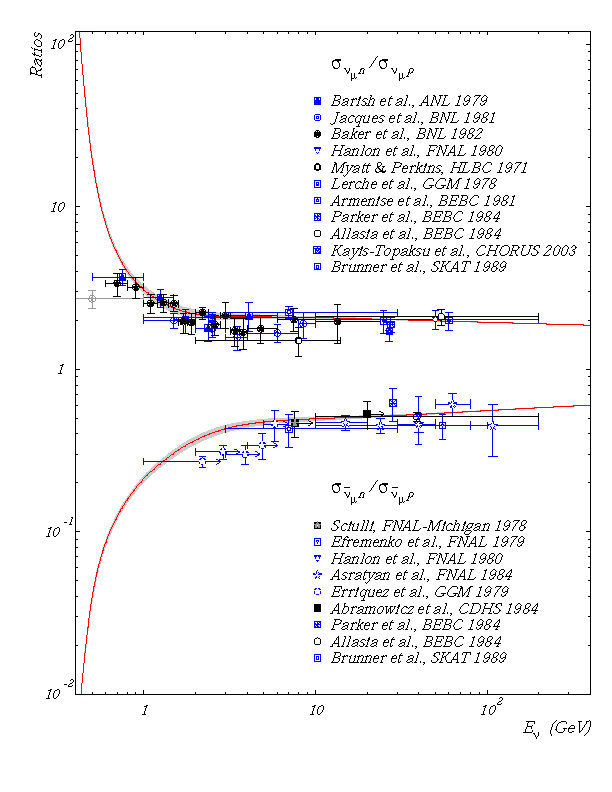 |
||
|
Fig.5: The ratios of the muon neutrino and
antineutrino scattering cross sections off neutron
and proton measured by the experiments at ANL, BNL, FNAL, CERN, and
IHEP. The curves and bands are calculated with the same
values of the fitted parameters as in Fig.3.
|
||
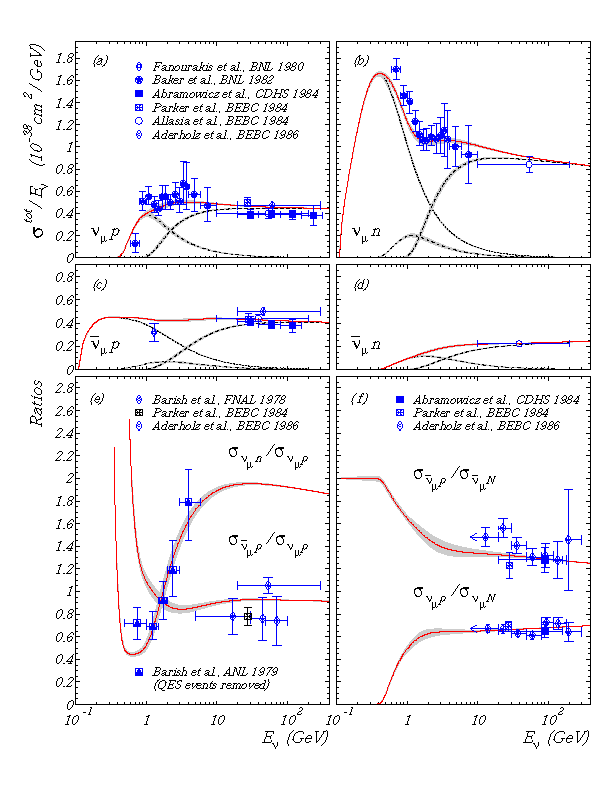 |
||
|
Fig.6: The slopes and ratios of different
kinds measured by the experiments at BNL, FNAL, and CERN. The curves
and bands in all six
panels are calculated with the same values of the fitted parameters as
in Fig.3.
|
